photo/audio essays on Santería and Gullah/Geechee culture
Audio: Sacred Rhythms of Cuban Santería
produced by Olavo Alén Rodríguez (Smithsonian Folkways Recordings, 1995), 1 hour
On Contemporary Cuban Practice of Santería
Photographed and captioned by Phil Clarke Hill
- The ceremony of San Lazaro at El Rincón church lasts all night, culminating in a midnight mass. Over the course of the night and the following day, thousands of people from all walks of life visit to make offerings and ask for help from San Lazaro.
- Each of these clay statues is an Ellegua, which Santería adherents receive in order as they gradually complete their initiations.
- A babalawo blessing the people with ceremonial corn powder. Over hundreds of years, believers have projected their worship of the Orishas onto images of Catholic saints. Nowadays, the religion is a true mixture of beliefs, with adherents taking different aspects on board—either leaning towards the Catholic or African side, depending on their personal choices.
- Animal sacrifice is an integral part of the rituals. Before the sacrifice, the animal is passed between those involved to take away their negative energy, which will then be released through the animal’s death. Music is also an important part of the practice; the Orishas are raised and brought into the physical realm through drumming and African-style call-and-response chanting.
- Santería has been practiced in Cuba for hundreds of years, ever since the first slaves arrived from Nigeria. Many Cubans, even if they don’t actively practice the religion, still consult santeros about issues in their lives.
- Santeros believe that blood rituals are necessary to release the negative energy and spirits of those involved. Certain parts of the ceremony have to be performed by a babalawo, who can only be a man who has reached the highest level of initiation.
- Herbal mixtures are used to cleanse those involved in the ceremony, in addition to the spraying of rum as a blessing. The mixtures are prepared by hand for a long time so they can encase the positive, cleansing energy from those making them.
- Santería is not regarded as an official religion by the state and therefore has no official places of worship; the ceremonies are carried out in the houses of the santeros. Various charms represent luck and protection. This pigeon was hanging above the door throughout the ritual, which lasts several days.
- The pilgrimage of San Lazaro is the largest religious event in Cuba. Every December 17, people come from all over the country to pray for good health or to be healed. Many of them go to great lengths to show their dedication, such as this man who dragged a concrete statue on his back for nine miles.
- Santeria grew in social ceneres called cabildos. The cabildo pictured is one of the oldest in Cuba; it’s located in Palmira, which is often regarded as the birthplace of Santería.
Shadows of the Gullah Geechee
Photographed by Pete Marovich
Captioned by Jordan G. Teicher
- Gullah Grub restaurant owner Bill Green and Ed Atkins hang out in Atkins Bait Shop, one of the oldest businesses in Beaufort County.
- Robert Middleton, deacon at First African Baptist Church on St. Helena, sits in the Coffin Point praise house with an old bible that has been used in the praise house for over 60 years.
- Jery Bennet Taylor sews sweetgrass baskets on the porch at Gullah Grub, a restaurant on St. Helena Island specializing in traditional Gullah food.
- Queen Quet Marquetta L. Goodwine, Chieftess of the Gullah/Geechee Nation, stands outside of one of the three remaining praise houses on St. Helena Island, S.C. Built during the slave era, they were small places of worship for the Gullah and still serve an important spiritual role in the Gullah community.
- Frank Bailey with a tray full of freshly picked beans from his garden in the Hog Hammock community on Sapelo Island.
- Darryl Stoneworth and his wife Angela carry the sweetgrass they harvested at the Okeetee Hunt Club near Hardeeville, South Carolina. With all of the traditional areas to harvest the grass in Mt. Pleasant now shut off to the Gullah due to the development of shopping centers and private residential communities, Stoneworth travels the 90 miles south to Hardeeville a few times each week during the month of July to pull the grass.
- Golf carts from private communities on Daufuskie Island surround the First Union African Baptist. Traditionally a Gullah church, it is now also used by residents of the private gated communities and visitors to the island.
- Members of the First Union African Baptist church discuss island issues and politics following a service on Daufuskie Island.
- A young member of Mt. Calvary Missionary Baptist Church walks toward the shore after being baptized in Skull Creek. Mt. Calvary Missionary Baptist Church is one of the few churches on Hilton Head Island that still performs traditional river baptisms. Other churches have given up the practice as development has limited their access to the island’s waterways.
- Eddie Grant Jr. tends his mother’s garden as new condominiums rise along her property line. While Grantâ’s family has managed to hold onto their land, many other Gullah Geechee residents have been forced to sell their property due to rampant development and escalating taxes.


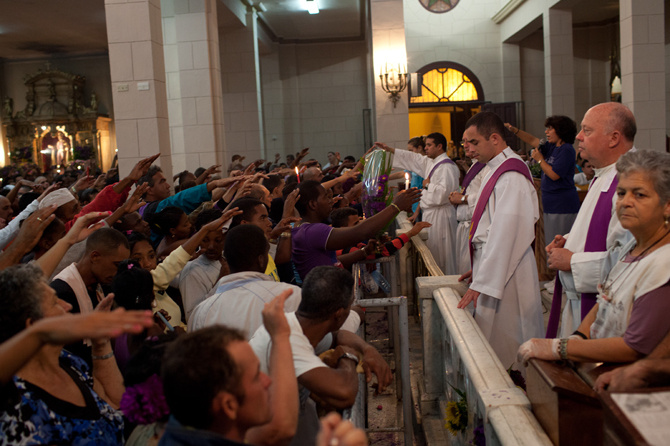
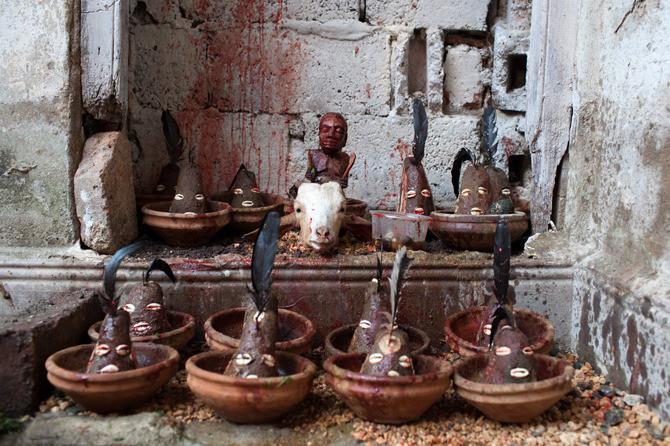
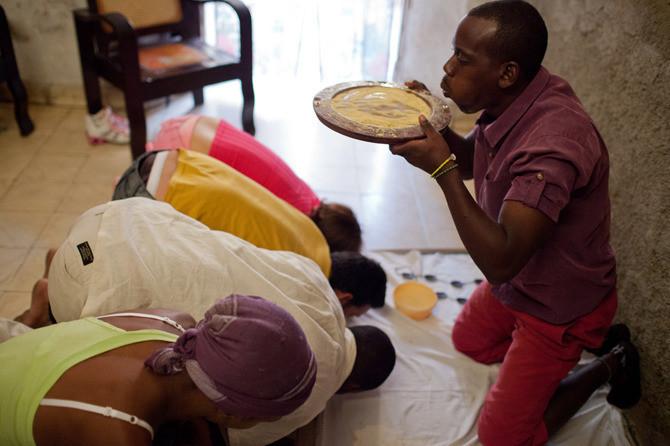
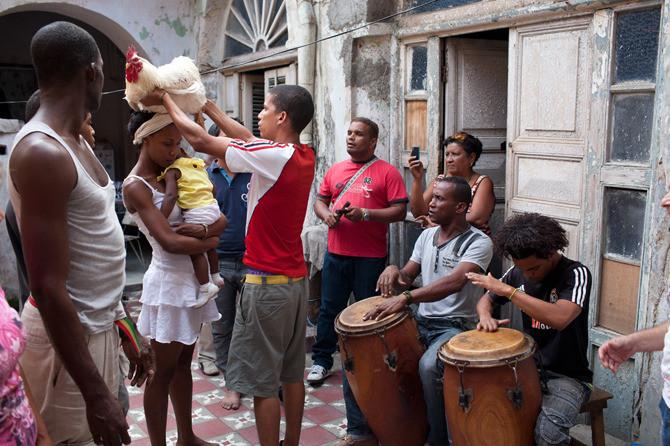







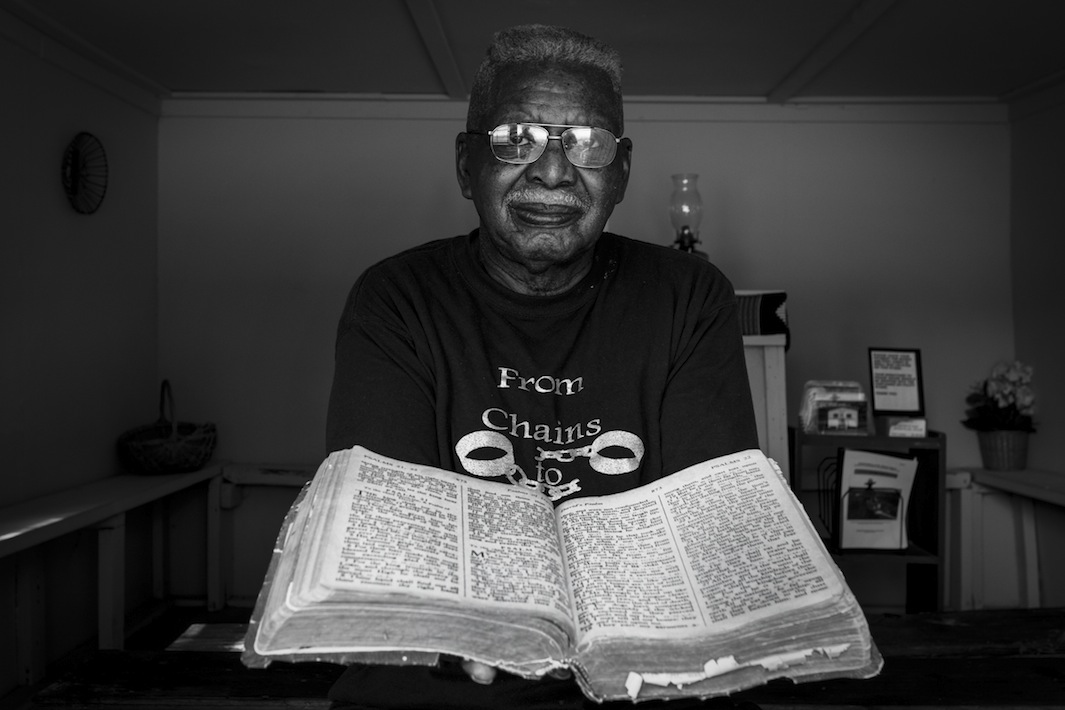

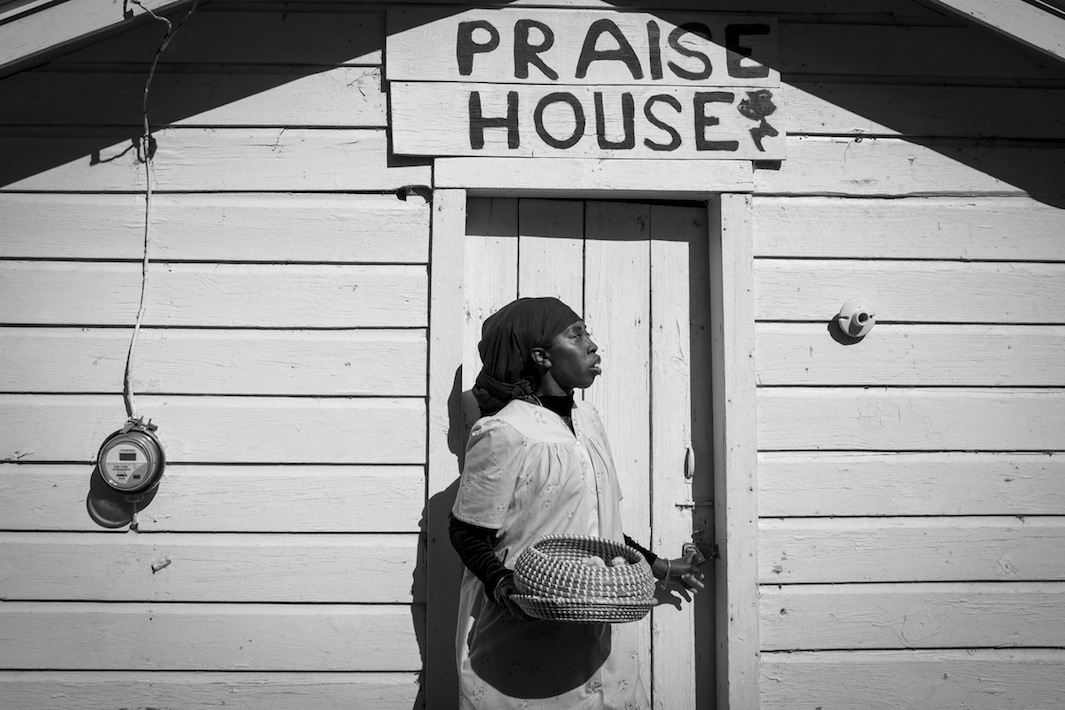
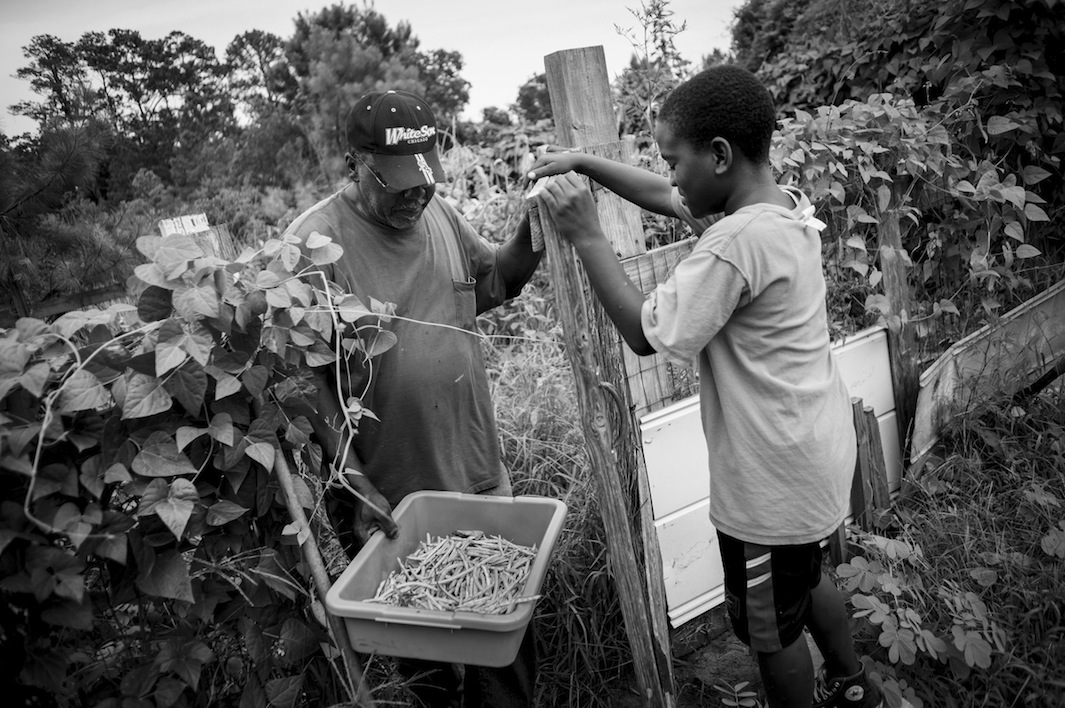



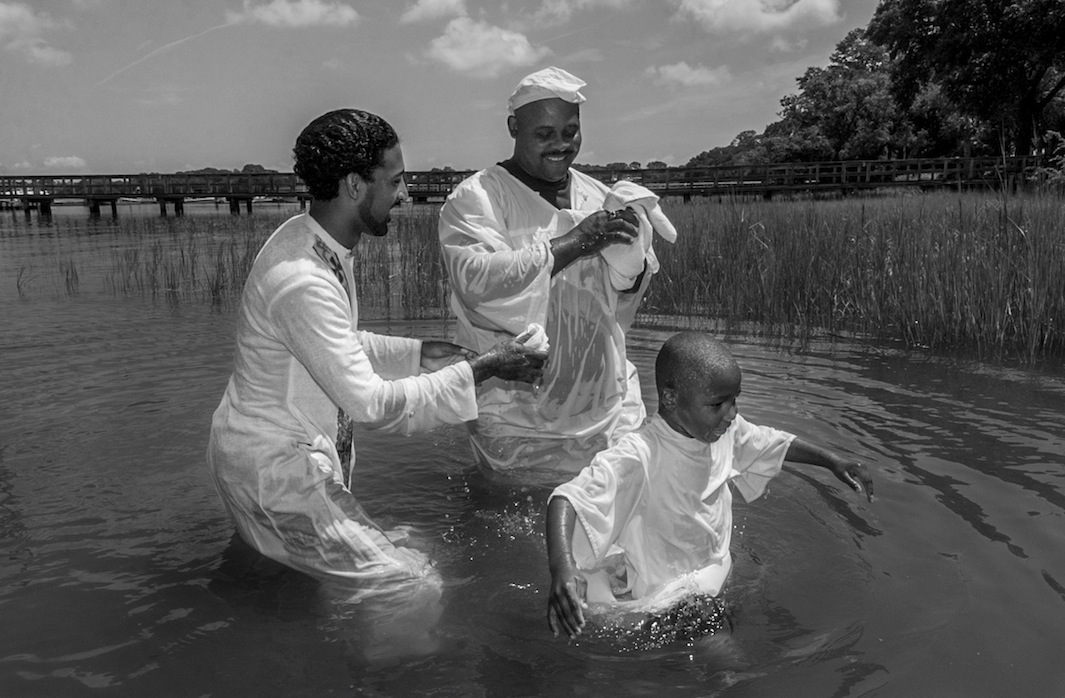

Comments ( 3 )